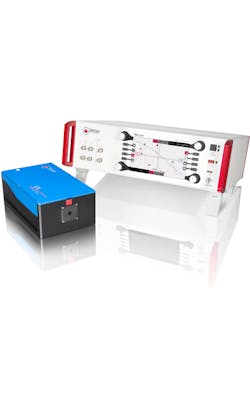Continuous, mode-hop-free wavelength tuning up to 110 nm is now possible around the new central wavelengths 1050, 1320 and 1470 nm. These new wavelengths complement the portfolio of TOPTICA’s laser platform CTL (Continuously Tunable Lasers).
TOPTICA’s CTL diode lasers are currently available at wavelengths ranging between 915 and 1630 nm. They can achieve ultra wide mode-hop-free motorized wavelength scans with high absolute accuracy, sub-pm resolution and output powers up to 80 mW. Piezo tuning allows even higher resolutions down to 5 kHz. With its unique resonator design, as well as its versatile and lowest noise all-digital controller (DLC pro), the CTL reaches low drift values and a linewidth below 10 kHz. The completely digital architecture enables mode-hop-free operation with a SMILE (Single Mode Intelligent Loop Engine), which is an active feedback loop that makes sure the laser always stays on the same mode – even during 110 nm wide scans. The controller offers a unique ease of use via touchscreen, knobs and buttons for functions like zooming into spectra, frequency locking and power stabilization. Remote control is possible with a convenient PC GUI or a powerful command language via TCP/IP and USB.
The new wavelengths of the CTL support a variety of applications like spectroscopy, waveguide characterization, studying microresonators, seeding ytterbium amplifiers, as well as testing of ytterbium fiber components. In addition, the CTL at 1470 nm central wavelength lends itself for specific applications in the telecommunication range (s-band and part of e-band), especially where high resolution and low noise are required.
